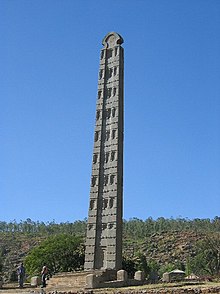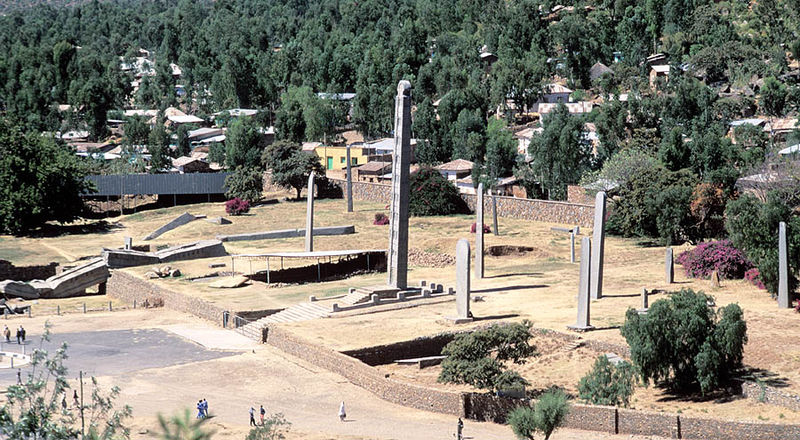
This obelisk, properly termed "stele" or the native "hawilt/hawilti" (as they do not end in a pyramid), was carved and erected in the 4th century A.D. by subjects of the Kingdom of Aksum, an ancient Ethiopian civilization. The function of these stelae is supposed to be that of "markers" for underground burial chambers. The largest of the grave markers were for royal burial chambers and were decorated with multi-story false windows and false doors, while nobility would have smaller, less decorated ones. King Ezana's Stele is, likely, the last example of this practice, outdated after the conversion of Axumites to Christianity. It is named after King Ezana, the first monarch of Axum to embrace Christianity, following the teachings and examples of his childhood tutor Frumentius. King Ezana's Stele is also the only one of the three major "royal" obelisks (the others being the Great Stele and the Obelisk of Axum) that never broke off. The Italians seriously damaged one of these, breaking the monument into three parts and shipping it away to Rome, in one of the most bizarre exploits of colonial plunder. King Ezana's Stele has been structurally consolidated in 2007/2008 by the team led by engineer Giorgio Croci, during the reassembling of the Obelisk of Axum.After decades of pleading for the return of their monument, the Ethiopians finally got back their national historic treasure.

No comments:
Post a Comment